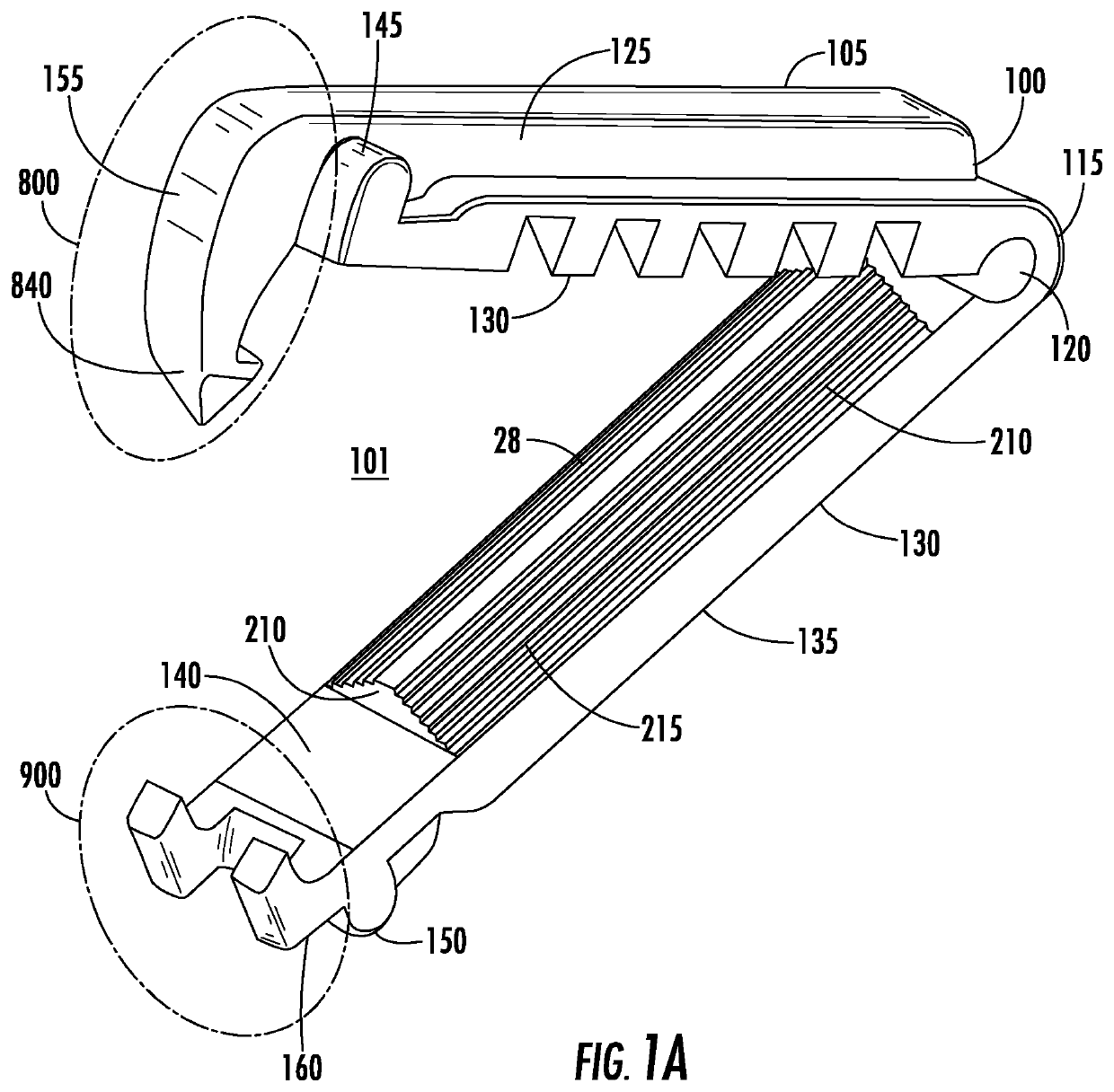Tissue spreading vascular clips with locking mechanism and non-slip clamping surfaces
a vascular clip and locking mechanism technology, applied in the field of surgical clips, can solve the problems of limited space and visibility, time-consuming and difficult to perform complex manipulations of needle and suture material, and affecting the effect of suction, so as to prevent dislodgment of the clip, prevent undesirable angulation (angular disorientation), and stabilize during use.
- Summary
- Abstract
- Description
- Claims
- Application Information
AI Technical Summary
Benefits of technology
Problems solved by technology
Method used
Image
Examples
Embodiment Construction
—SURGICAL CLIP WITH HEAD LOCKING CAPABILITY AND A HINGE PORTION LOCKING
[0064]In this embodiment, a ligating clip has a head locking capability and a hinge portion locking capability.
[0065]Hinge Lock
[0066]In FIG. 8F-8H, the hinge portion 115 of a surgical clip is constructed with a hinge lock 812 comprising a first hinge locking element 810 and a second hinge locking element 820, thus providing an irreversible locking mechanism at the proximal hinge end 115 of the clip 100. As the clip arms 105, 110 are re-approximated together to clamp tissue between the arms, a prong 815 of first hinge locking element 810 will fit irreversibly into a slot or groove 825 of the second hinge locking element 820. Once the prong 815 and slot 825 are united, the hinge 115 is said to be in the locked and closed position. By having a hinge lock apparatus at the hinge area, there will be constant pressure applied to the tissue being clamped at the hinge region as well as the male-female locking interface re...
PUM
 Login to View More
Login to View More Abstract
Description
Claims
Application Information
 Login to View More
Login to View More - R&D
- Intellectual Property
- Life Sciences
- Materials
- Tech Scout
- Unparalleled Data Quality
- Higher Quality Content
- 60% Fewer Hallucinations
Browse by: Latest US Patents, China's latest patents, Technical Efficacy Thesaurus, Application Domain, Technology Topic, Popular Technical Reports.
© 2025 PatSnap. All rights reserved.Legal|Privacy policy|Modern Slavery Act Transparency Statement|Sitemap|About US| Contact US: help@patsnap.com



